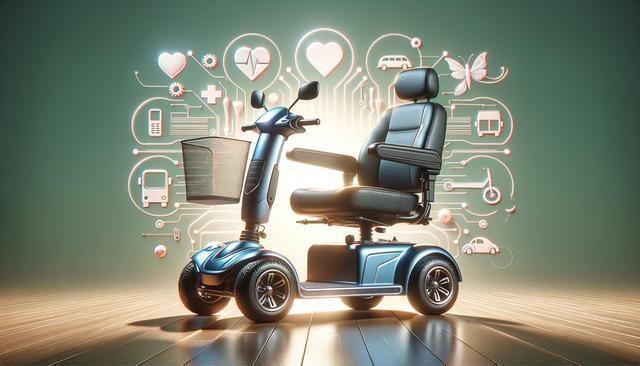Understanding the Importance of Walking Aids for Seniors
Mobility is a key component of independence and well-being, especially for older adults. As people age, natural changes in balance, muscle strength, and joint flexibility can make it more challenging to move around safely. This is where senior mobility aids come into play. These tools are designed to support safe movement, prevent falls, and enhance confidence in daily activities. From simple canes to more supportive walkers, each aid serves a unique purpose tailored to the user’s needs.
Walking aids not only offer physical support but also contribute to emotional and social well-being. By helping seniors stay mobile, they can continue participating in social events, running errands, or simply enjoying a walk outdoors. This level of activity plays a vital role in maintaining overall health and reducing feelings of isolation or dependency. Understanding the walking aid benefits can help families and caregivers make informed decisions about mobility support for their loved ones.
Types of Walking Aids and Their Functions
There is a wide variety of walking aids available, each with its own advantages and recommended use cases. Knowing the distinctions between them can assist in identifying the top walking aids for elderly individuals based on their specific mobility challenges.
- Canes: Ideal for individuals who need minimal support and balance assistance.
- Crutches: Typically used for temporary support after an injury or surgery.
- Walkers: Offer more stability and come in different forms, such as standard, rolling, or rollator walkers with wheels and seats.
- Walking frames with seats: Provide support and a resting place, beneficial for those with limited endurance.
Each option has its own features, and the choice often depends on the user’s strength, balance, and the environment in which the aid will be used. Whether indoors or outdoors, the right device can significantly improve safety and comfort.
How to Choose the Right Walking Aid
When exploring how to choose a walking aid, several factors should be considered to ensure the right fit. It’s not just about physical support; comfort, usability, and personal lifestyle also play significant roles. Here are some key aspects to keep in mind:
- Level of mobility: Assess how much support is needed — minimal, moderate, or maximum.
- Physical condition: Joint health, upper body strength, and balance affect the choice of aid.
- Environment: Usage in tight indoor spaces versus uneven outdoor terrain may require different types of aids.
- Portability: Lightweight and foldable models are easier to transport and store.
- Personal preferences: Grip type, height adjustability, and additional features like baskets or seats can influence comfort and convenience.
Consulting with a healthcare professional or physical therapist is highly recommended. They can assess individual needs and recommend options that align with health conditions and lifestyle goals.
Benefits of Walking Aids for Independence
One of the most empowering aspects of using a walking aid is the sense of independence it can restore. Walking aids for independence allow seniors to remain active participants in their communities and households, reducing reliance on others for routine mobility needs. This autonomy can lead to improved mental health and a stronger sense of self-worth.
The key walking aid benefits include:
- Increased safety by reducing the risk of falls
- Enhanced confidence in walking and standing
- Greater endurance and ability to walk longer distances
- Support for maintaining proper posture and alignment
- Access to a more active and socially engaged lifestyle
By addressing both physical and emotional concerns, walking aids can be a critical component in a holistic approach to aging well. They provide reassurance not just to the user, but also to family members and caregivers.
Promoting Quality of Life Through Mobility Support
Choosing the best walking aid for seniors is about more than just selecting a supportive device — it’s about enhancing daily life. Mobility aids empower seniors to perform everyday activities with greater ease, from grocery shopping to visiting friends. This improved quality of life can lead to better health outcomes and a more positive outlook on aging.
Among the top walking aids for elderly individuals, those that combine stability with user-friendly features tend to be the most effective. Features such as ergonomic handles, adjustable height, and easy maneuverability are often prioritized. Additionally, aids that are lightweight yet durable are particularly well-regarded.
For caregivers and family members, being informed about senior mobility aids can make a significant difference in supporting a loved one’s independence. Encouraging the use of a suitable walking aid can lead to a safer, more fulfilling lifestyle for seniors navigating the challenges of reduced mobility.
Conclusion: Supporting Safe and Independent Living
Walking aids are more than just physical tools — they are gateways to freedom, safety, and emotional well-being. For seniors facing mobility issues, the right walking aid can make a world of difference. By understanding the various walking aid benefits and how to make an informed choice, families and caregivers can help promote a lifestyle that values autonomy and health. Whether you’re looking for the best walking aid for seniors or simply seeking guidance on how to choose a walking aid, prioritizing comfort, safety, and daily functionality will ensure that the selected device truly meets the user’s needs. With the right support, walking aids can be powerful allies in aging with dignity and confidence.




Leave a Reply